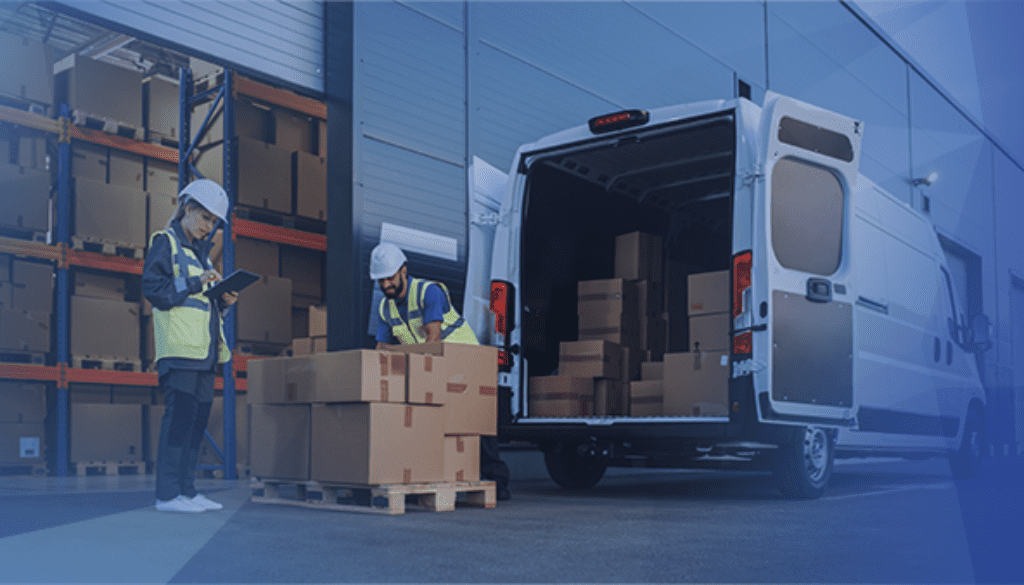Supporting Employee Safety in Transportation and Warehousing
Employee safety is a critical concern in all sectors, but it’s especially challenging in the transportation and warehousing industries. Drivers, loaders and other transportation workers face unique threats to their health and safety, as do employees in the warehousing industry. Corporations and managers must take proactive measures to protect their employees during normal operations and emergency situations.
Occupational accidents and injuries can occur when safety protocols are ignored and potential risks aren’t communicated. For example, severe weather conditions can delay transportation, affect supply chain operations and make workers late for their shifts.
Managers must maintain communication with workers in all locations (including those who are off-duty) to provide clear instructions about shift delays and operational updates. Failing to communicate can lead to confusion and increase the risk of injuries, production delays and decreased morale.
Employee safety challenges in transportation
The transportation industry includes trucks, ships, airplanes and trains that carry people and cargo. A single equipment malfunction can have devastating consequences, and scheduling delays can lead to significant financial losses. Severe weather, road work and law enforcement activity can all cause delays and threaten employee safety and production timelines.
Staffing challenges can significantly impact transportation providers. Drivers, maintenance workers and cargo loaders must comply with strict local and federal regulations and may miss shifts due to illness or lack of sleep. When illness or injury affects even a single employee, managers must be able to find a substitute quickly or risk severe delays and potential financial losses.
Occupational injuries in warehousing
Warehousing employees face on-the-job threats to their physical and mental health. Equipment failures and accidents can cause catastrophic injuries and even deaths. Employees can also sustain injuries when they aren’t properly trained to use equipment, follow safety protocols or report problems to the appropriate authorities.
On-site crises can have long-term effects on workers’ mental health, and companies may incur heavy fines if dangerous situations were caused by a lack of personal protective equipment or safety training. Managers must understand and comply with all state and federal safety regulations and must ensure that all employees have access to PPE and know how and when to use it.
Communication solutions for transportation and warehousing companies
Unfortunately, there isn’t a way to prevent all emergencies from happening. Even the best preparedness and mitigation strategies can’t overcome severe weather conditions, traffic, wildfires and workplace violence. However, reliable communication can significantly reduce the negative outcomes of these crises and can help transportation and warehousing providers reduce recovery time and return to normal operations as soon as possible.
Critical communication
Communication can be challenging in a warehouse environment, but it’s no less important than in any other occupational situation. Managers must be able to quickly inform employees of an emergency, such as an equipment malfunction, illness outbreak or active assailant. Alerts must also reach off-site employees, including off-duty workers, transportation providers and contractors.
Emergency alerts aren’t the only example of critical communications for transportation and warehouse corporations. Managers much also be able to communicate reliably with workers during standard operations. Common examples of operational messages include updates to management, schedule changes, holiday reminders and event announcements. HR representatives can send messages to inform employees of their benefits and provide health and wellness resources.
Anonymous tip reporting
In many cases, safety concerns and potential threats are ignored because managers do not see them. Foremen and shift managers can’t identify all potential risks, so encouraging employees to “see something, say something” is critical for effective risk mitigation.
Rave Mobile Safety’s personal safety apps include anonymous text-to-tip functionality. This feature encourages employees to maintain situational awareness and report any potential issues, from mental health concerns to suspicious behavior. Employees can also send anonymous tips about safety and compliance issues without fear of reprisal from their supervisors.
Staffing and shift management
Unplanned events, outages and disruptions can have severe impacts on schedules and deadlines. Managers may need to delay start times or call in extra employees at short notice.
Automated phone calls and voicemail messages are rarely answered, and email is often too slow in time-sensitive situations. With two-way text communication, managers can quickly reach employees (even those who are away from their computers) and check their availability, which significantly reduces the time and effort involved in addressing staffing shortages.
Rave Mobile Safety helps employers protect their workers
Fires, road work, violent incidents and severe weather are just a few of the crisis situations that can endanger transportation and warehousing employees and disrupt operations. Corporations must identify and address the unique threats to their workers and facilities in order to mitigate the potential human and financial losses that follow emergencies.
Communication is critical to emergency preparedness and response. Foremen and managers must be able to send fast, reliable emergency alerts to employees in all locations, including drivers on the road and maintenance personnel in remote locations. They must also have robust two-way communication tools to facilitate discussions about last-minute shift updates, rapidly changing conditions and concerns about safety, compliance and morale.
Rave Mobile Safety, a Motorola Solutions company, offers communication and personal safety solutions to meet these needs. Our mass notification system automatically translates messages into over 60 languages and sends them via multiple channels: email, voice, text, desktop notifications and digital signage. Two-way communication tools include polls and status checks that make it easy for managers to check in with workers anywhere.
Corporations in all industries must prioritize communication with their employees, contractors and shareholders. Rave Mobile Safety helps employers protect their people, facilities and profits from the consequences of crisis situations. With our tools, managers can facilitate critical conversations and provide essential alerts and instructions during an emergency. We offer prebuilt platforms as well as customizable solutions. To find out which Rave Mobile Safety products are right for your company, contact our team.





